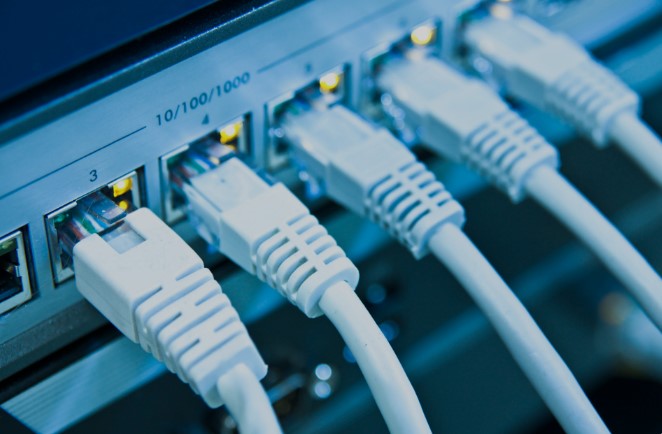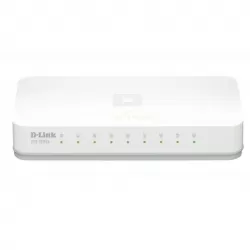Used Unmanaged Switch or Refurbished Unmanaged Switch of ATEN and D-link in UAE.
What is an Unmanaged Switch?
It is a plug-and-play device that automatically connects network devices, such as computers, printers, and servers, to create a local area network (LAN).
Unlike managed switches, unmanaged switches do not have a user interface for configuration or management. They operate using default settings, which means they are easy to install and require minimal technical expertise.
Unmanaged switches are typically used in small networks where simple connectivity is required, and there are no advanced features needed, such as VLANs, Quality of Service (QoS), or link aggregation. They are also less expensive than managed switches and consume less power, making them a cost-effective solution for small businesses and home networks.
Features for unmanaged Switch
Unmanaged switches are designed to be simple and easy to use, with a focus on basic functionality and plug-and-play installation. Here are some of the typical features of an unmanaged switch:
Basic Switching:
Unmanaged switches can connect multiple network devices, such as computers, printers, and servers, and allow them to communicate with each other.
Auto-negotiation:
Unmanaged switches typically support auto-negotiation, which means they can automatically detect the speed and duplex mode of the connected devices and adjust their settings accordingly.
Plug-and-Play:
Unmanaged switches are designed to be easy to install and use, with no configuration or management required.
No user interface:
Unmanaged switches do not have a user interface or management console, which means they cannot be configured or managed.
Limited port options:
Unmanaged switches typically have a limited number of ports, ranging from 4 to 24, making them suitable for small networks.
Basic security:
Unmanaged switches offer basic security features, such as MAC address filtering, which can limit the number of devices that can connect to the network.
Low cost:
Unmanaged switches are typically less expensive than managed switches, making them a cost-effective solution for small businesses and home networks.
Unmanaged Commercial Grade Switches
| Model | Product Name | Copper Ports | Copper Speed | Fiber Ports | Fiber Speed | Connector Type |
| SG70460 | 4-Port Unmanaged Switch | 2 | 10/100/1000 | 2 | 1G | LC |
| SG70660 | 6-Port Unmanaged Switch | 4 | 10/100/1000 | 2 | 1G | LC |
Unmanaged Industrial Grade Switches
| Model | Product Name | Copper Ports | Copper Speed | Fiber Ports | Fiber Speed | Connector Type |
| SF70460 | 4-Port Unmanaged Industrial Switch | 2 | 10/100/1000 | 2 | 100/1G | LC |
| SF70660 | 6-Port Unmanaged Industrial Switch | 4 | 10/100/1000 | 2 | 100/1G | LC |
| SF70760 | 7-Port Unmanaged Industrial Switch | 6 | 10/100/1000 | 1 | 100/1G | LC |
| SF70960 | 9-Port Unmanaged Industrial Switch | 8 | 10/100/1000 | 1 | 100/1G | LC |
| SF71060 | 10-Port Unmanaged Industrial Switch | 8 | 10/100/1000 | 2 | 100/1G | LC |
How to choose between an Unmanaged switch?
Choosing between a managed and unmanaged switch depends on your network requirements and budget. Here are some factors to consider when deciding whether to choose an unmanaged switch:
Size of Network:
If you have a small network with a few devices, an unmanaged switch may be sufficient. However, if you have a large network with many devices and multiple subnets, a managed switch may be necessary.
Network Traffic:
If you have heavy network traffic or require Quality of Service (QoS) to prioritize traffic, a managed switch may be necessary. Unmanaged switches do not offer QoS.
Security:
If your network requires advanced security features, such as VLANs, Access Control Lists (ACLs), or port mirroring, a managed switch may be necessary.
Budget:
Unmanaged switches are generally less expensive than managed switches, making them a cost-effective solution for small networks.
Future Scalability:
If you anticipate your network growing in the future, a managed switch may be a better choice, as it offers more advanced features and can be configured to support future growth.
In general, if your network is small and you only need basic connectivity, an unmanaged switch may be sufficient. However, if you require advanced features or anticipate future growth, a managed switch may be necessary.
How Does Unmanaged Switch Work?
An unmanaged switch works by connecting multiple devices on a local area network (LAN) to enable them to communicate with each other. Here's a brief overview of how an unmanaged switch works:
The unmanaged switch is connected to a power source and to devices such as computers, printers, and servers via Ethernet cables.
Each device connected to the unmanaged switch sends data packets to other devices on the network.
When a device sends a data packet, the unmanaged switch examines the packet's destination MAC address to determine which port to send it to.
The unmanaged switch forwards the data packet to the appropriate port, and the receiving device reads and processes the packet.
If multiple devices send data packets at the same time, the unmanaged switch will queue the packets and transmit them one by one to prevent collisions.
Unmanaged switches support auto-negotiation, which means they can automatically detect the speed and duplex mode of the connected devices and adjust their settings accordingly.
Unmanaged switches do not have a user interface or management console, which means they cannot be configured or managed.
Overall, an unmanaged switch provides simple connectivity between devices on a network, allowing them to communicate with each other without any configuration or management required.
To use an unmanaged switch, simply connect it to a power source and connect devices, such as computers, printers, and servers, to the switch using Ethernet cables. The unmanaged switch will automatically connect the devices and enable them to communicate with each other. There is no configuration or management required, making it a simple and easy-to-use networking solution for small networks.
An unmanaged switch does not have an IP address as it operates at the Data Link layer of the OSI model and does not require IP addressing. It only forwards data packets based on the destination MAC address, without any knowledge of the IP addresses of the connected devices.
Yes, unmanaged switches require power to function. They are typically powered through an AC adapter or via Power over Ethernet (PoE) and must be connected to a power source to operate.







